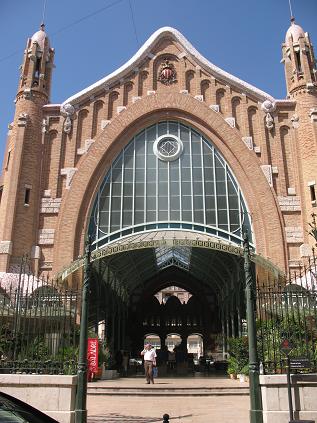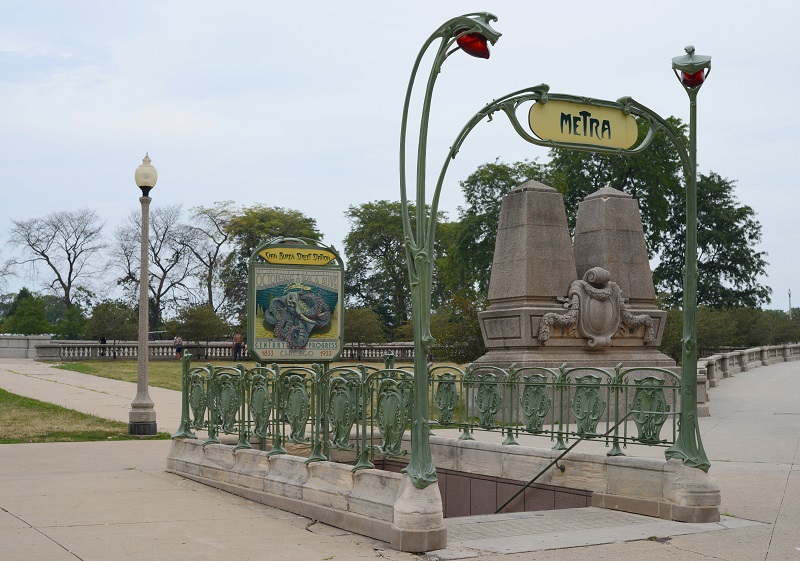Art Nouveau
Art Nouveau was a movement that emerged towards the end of the 19th century. It had a significant influence on the decorative arts and architecture but was relatively short-lived and fell out of favour in the 1920s with the arrival of Art Deco.
Art Nouveau was symptomatic of the struggle between the old and the new. Whilst it rejected some of the revivalist styles of the 19th century, it did adopt some of the elements of Rococo, with organic forms and applied art typified by Hector Guimard's Paris metro entrances.
The central aim of Art Nouveau was to escape the eclectic historical styles that had come to dominate the late-19th century and so modernise design. Inspiration was drawn from both organic and geometric forms, merging flowing, natural designs with more angular and rigid contours.
The movement adopted the ethos ‘form follows function’; however, as the style progressed designers began to incorporate more lavish decorations which led to criticisms that a tendency towards the elaborate was in conflict with its original ideology.
Art Nouveau had significant influence on graphic and visual arts and was a major source of inspiration for architecture in European cities such as Paris, Prague, Vienna, and Budapest. Prime examples include the Museum of Applied Arts in Budapest, and the Secession Building in Vienna, both of which demonstrate the style’s decorative and symmetric aesthetic. Also of note is the Grand Palais in Paris, which although predominantly Beaux Arts, drew from the Art Nouveau decorative style for the design of its interior glass dome.
Notable exponents of Art Nouveau in architecture include the American architect Louis Henry Sullivan, who used decorative plant-like ironmongery on traditionally structured buildings, and the Spanish architect Antonio Gaudi, who developed a highly-distinctive style to create curving, bulbous, and organic forms.
[edit] Related articles on Designing Buildings Wiki
- Aesthetic movement.
- Architectural styles.
- Art Deco.
- Art Moderne.
- Arts and craft movement
- Baroque architecture.
- Bauhaus.
- Beaux Arts style.
- Constructivist architecture.
- Deconstructivism.
- Edwardian architecture.
- High-tech architecture.
- Rococo.
[edit] External articles
- The Art Story - Art Nouveau
Featured articles and news
Moisture, fire safety and emerging trends in living walls
How wet is your wall?
Current policy explained and newly published consultation by the UK and Welsh Governments.
British architecture 1919–39. Book review.
Conservation of listed prefabs in Moseley.
Energy industry calls for urgent reform.
Heritage staff wellbeing at work survey.
A five minute introduction.
50th Golden anniversary ECA Edmundson apprentice award
Showcasing the very best electrotechnical and engineering services for half a century.
Welsh government consults on HRBs and reg changes
Seeking feedback on a new regulatory regime and a broad range of issues.
CIOB Client Guide (2nd edition) March 2025
Free download covering statutory dutyholder roles under the Building Safety Act and much more.
AI and automation in 3D modelling and spatial design
Can almost half of design development tasks be automated?
Minister quizzed, as responsibility transfers to MHCLG and BSR publishes new building control guidance.
UK environmental regulations reform 2025
Amid wider new approaches to ensure regulators and regulation support growth.
The maintenance challenge of tenements.
BSRIA Statutory Compliance Inspection Checklist
BG80/2025 now significantly updated to include requirements related to important changes in legislation.
Shortlist for the 2025 Roofscape Design Awards
Talent and innovation showcase announcement from the trussed rafter industry.
























